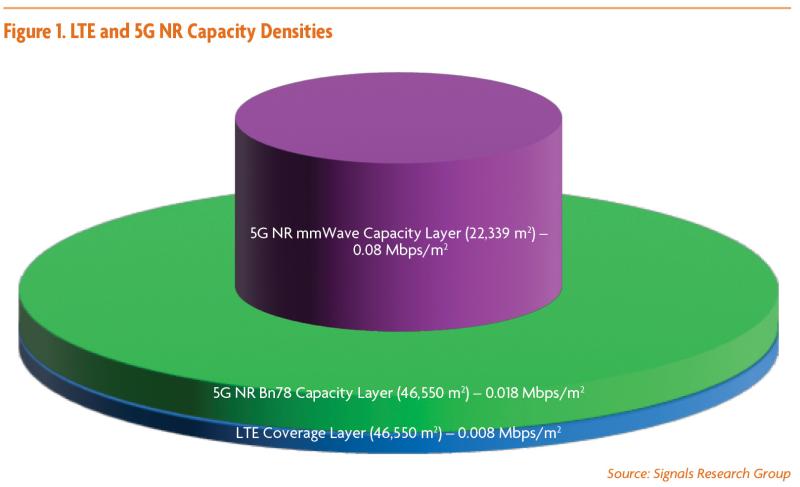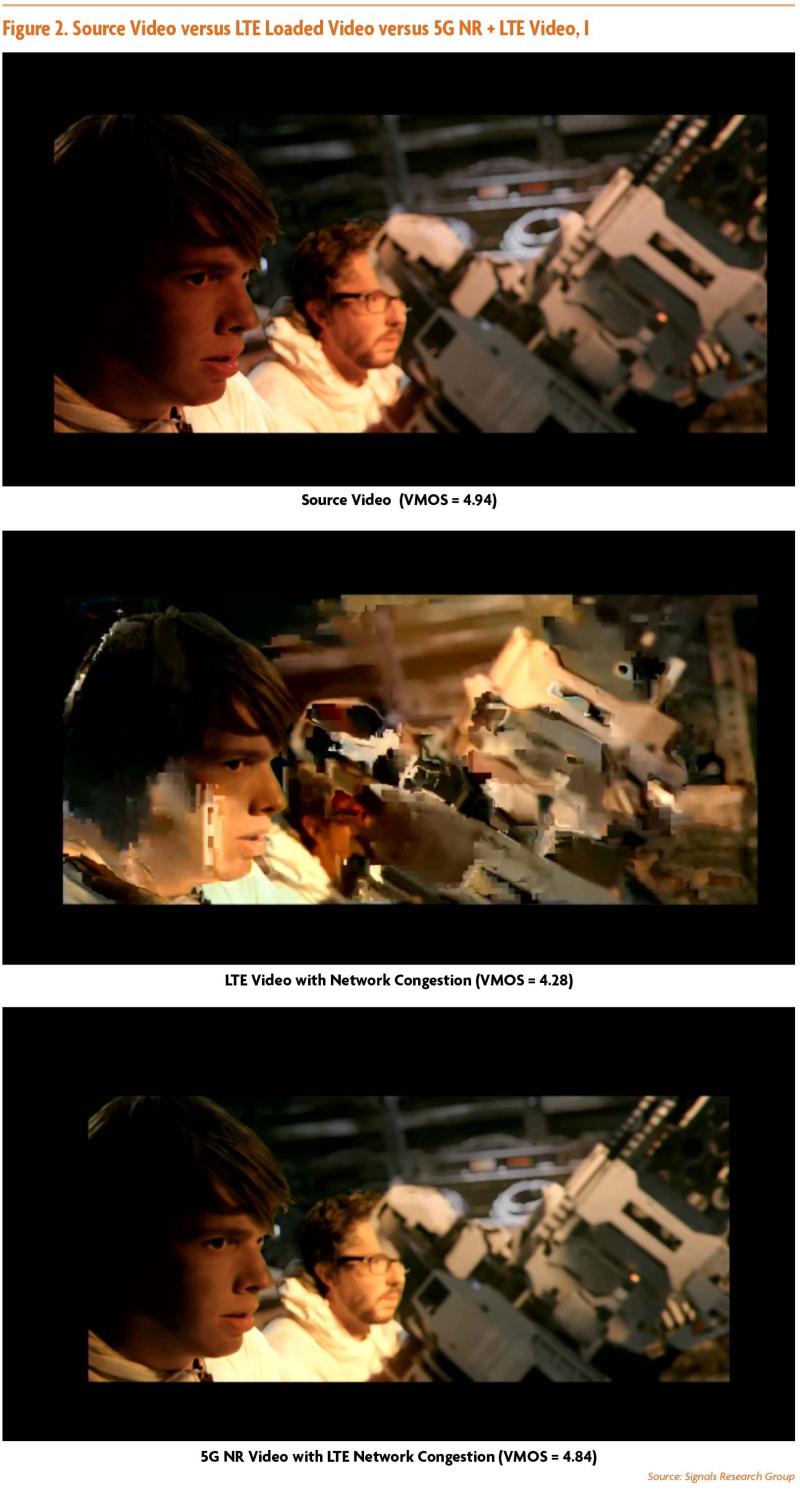
Signals Research Group (SRG) recently published a benchmark study of 5G New Radio (NR) millimeter wave (mmWave) performance that we did on behalf of Qualcomm Technologies.
Although I’ve done multiple benchmark studies on 5G NR mmWave, this is the first study I’ve done which incorporated a large number of smartphones to look at real-world system-level performance (more on this aspect in a bit). In addition, we included 5G NR mmWave performance in Europe – Helsinki, Finland, to be precise, thus giving me the chance to fly internationally after close to a two-year hiatus.
What we found is this: 5G NR mmWave provides critical additional network capacity in indoor venues and outdoor environments, even in the presence of LTE and mid-band 5G NR. Both LTE and mid-band 5G NR have impressive performance traits, but they run out of runway (spectrum) in relatively short order. Even modest bit rate applications, like live video streaming and video viewing, benefit with 5G NR mmWave in the presence of network loading.
We looked at two deployment scenarios for 5G NR mmWave. In Phoenix, Arizona, we tested in the Footprint Center (Verizon), which is home to the Phoenix Suns NBA basketball team, as well as a host venue to innumerable events. The Eagles played the night before I arrived while Disney’s Frozen was icing the floor while I was there in preparation for Elsa and Anna to arrive shortly after I left.
We set up our test area near one of the refreshment centers, which is always a high traffic area whenever the venue is being used. Typically, we use no more than a few smartphones in our tests.
In this case, we used 16 Samsung Galaxy S20 smartphones, spread throughout the refreshment area. With a large contingent of smartphones, we sought to load all six channels of the LTE network (2x60 MHz total) with downlink or uplink data traffic to determine the actual capacity of the 4G network and then quantify the incremental benefit due to the introduction of 800 MHz of mmWave spectrum.
We also looked at the user experience with and without 5G NR mmWave by analyzing video performance – YouTube Live streaming for the uplink and video streaming for the downlink.
In Helsinki (Elisa), we selected an outdoor plaza where the operator has LTE (3 bands or 2x60 MHz), 5G NR deployed in Band n78 (100 MHz at 3.5 GHz), and where it has two collocated 5G NR mmWave radios (800 MHz at 26 GHz).
For this testing, we did walk tests while generating full buffer data transfers to determine the capacity density of each band/technology, or how much total data traffic is possible within the area covered by an LTE or 5G NR radio. The layered cake figure in Figure 1 stems from this portion of the study.

To make things realistic, we placed up to 19 Asus smartphones for Snapdragon Insiders in two adjacent cells to generate additional interference beyond what was being generated by commercial traffic.
Here are the highlights (if something isn’t clear, then I encourage you to read the paper where we show the results and our analysis of the data in excruciating detail.)
- Despite the enhanced efficiencies of LTE networks, there is a breaking point in the amount of data traffic these networks can support. When testing both venues, we calculated the LTE spectral efficiency for downlink data traffic was between 5-7 bps/Hz with the uplink spectral efficiency approximately half what we observed in the downlink direction.
- When combined with the somewhat limited amount of spectrum available for LTE services, we observed reduced downlink/uplink data speeds, even with the number of smartphones we used in our tests. The lower throughput had a noticeable impact on the user experience when live streaming video content (uplink) or viewing video content (downlink). Figure 2 illustrates a great example of how the video is impacted with loading.

- We documented at least a 10x increase in the downlink total throughput versus LTE and at least a 2x increase in the uplink total throughput versus LTE after enabling 5G NR mmWave on the smartphones. Individual user data speeds (per smartphone) can increase even further, thanks to the use of PDCP combining, which allows the simultaneous transmission of data content over both networks.
- With 5G NR mmWave enabled on the smartphones, the video performance (downlink and uplink) improved substantially. In addition to eliminating video freezes and impairments, there was an overall increase in sector throughput, which can benefit all consumers, even consumers without a 5G NR mmWave smartphone.
- In uplink tests, involving different numbers of smartphones supporting 5G NR mmWave + LTE or LTE only, we observed smartphones with 5G NR functionality had, on average, uplink data speeds up to 3.7x higher than those smartphones which only supported LTE. In these tests most smartphones only used a single 100 MHz mmWave channel. Since we did this test, we’ve had the opportunity to witness a pre-commercial smartphone use four 100 MHz mmWave channels, which substantially increases the uplink throughput over what we observed in the results obtained for this study.
- The benefits of deploying 5G NR mmWave also apply to operators with mid-band 5G NR networks. We documented a 4.4x increase in the “capacity density” due to 5G NR mmWave deployed within a mid-band 5G NR network. By our definition, the capacity density quantifies the total throughput (Mbps) delivered across a target area (m2). Figure 1, which was drawn to scale relative to LTE and mid-band 5G NR coverage and capacity, highlights this finding.
- 5G NR mmWave coverage is surprisingly robust and it doesn’t necessarily require significantly higher cell densities, compared to the existing cell grid. In an indoor venue, 5G NR mmWave coverage is nearly ubiquitous in the areas where it is intended to provide coverage. This outcome isn’t surprising given the line-of-site conditions and the close confines of the coverage area (e.g., a basketball arena or football stadium).
- In an outdoor deployment, operators will deploy 5G NR mmWave in high traffic areas where the cell densification is already significant. A one-for-one overlay won’t necessarily provide ubiquitous mmWave coverage, but it goes a long way toward providing significant capacity over much of the targeted coverage area.
Accuver Americas and Spirent Communications allowed us to use of their respective drive test tools and test platforms. We’ve worked with both companies for more than a decade and they are valuable partners in many of our drive test campaigns.
In summary, although the higher downlink, and now uplink, data speeds associated with 5G NR mmWave make for great marketing, the real value of 5G NR mmWave is the additional capacity it offers. Operators in the U.S. were at the forefront, but now operators around the world are following in their footsteps.
Michael Thelander is the president and founder of Signals Research Group (SRG), a U.S.-based research consultancy. Prior to founding SRG in 2004, Thelander was an analyst with Deutsche Bank Equity Research. Before that, he was a consultant with KPMG (now known as BearingPoint) and a communications officer with the United States Army.
"Industry Voices" are opinion columns written by outside contributors—often industry experts or analysts—who are invited to the conversation by FierceWireless staff. They do not represent the opinions of FierceWireless.
